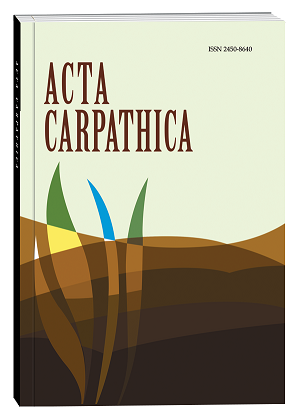NITROGEN-HYDROCARBON EXCHANGE IN THE COWS SCARS IN THE PRE- AND POST-CALVING PERIODS WHEN CORRECTION OF MONENSIN AND NATURAL PHYTO-IONOPHORUM
DOI:
https://doi.org/10.32782/2450-8640.2024.1.3Keywords:
highly productive cows, scars cows, monensin, hon conesAbstract
Biochemical transformation of the nutriens of feed in the ruminats is the result of the vital functions of different taxonomic groups of microorganisms. The article presents data on the influence in the pre- and post-calvihg periods diet supplementation with monensin and hon cones on rumenal fermentation. Using monensine and hon cones in the diets of highly productive cows in the last month of the dry period and in the first month of lactation in the scientific and business experience helped to improve the metabolic processes in the rumen. It was established that in egalitarian performance during fermentation scar animal control and experimental groups practically different. Given the correction diet of highly productive cows, the content ammonia in the rumen of animals two experimental groups was in 21.7% and 24.4% times than animals in the control group, indicatihg a more efficient use of protein components in animals reseach groups. In rumen of cows treated with hon cones were observed that leading to elevated level of volatile fatty acids and lower levels of lactate. The hon cones increases the amount of microbial protein in the rumen. The intensity od growth of microorganisms in the rumen and their metabolic activity depends on the contents of energy and protein, micro- and trace elements, and their availability in the animals diet.
References
Behr J., Vogel R.F. Mechanisms of hop inhibition include the transmembrane redox reaction Appl. Environ. Microbiol., 2010. № 76 (1), 142–149.
Rumen microorganisms and fermentation. Arch. A.R. Castillo-Gonzalez, M.E. Burrola-Barraza, J. Dominguez-Viveros, A. Chavez-Martinez. Med. Vet. 2014. № 46 (3), 349–361.
Cattoor K., Dresel M., De Bock L., Boussery K., Van Bocxlaer J., Remon J.P., et al. Metabolism of hop-derived bitter acids. J Agric Food Chem., 2013. № 61 (33), 7916–7924.
Demarco C.F., Schwegler E., Brauner C.C., Ferri E., Halfen J., Florio G., et al. Monensin controlled-release capsules do not change performance and metabolic profile in unchallenged beef cattle. Acta Scientiae Veterinariae, 42, 2014. Pub. 1245. 1–6.
Flythe M.D., Kagan I.A., Wang Y., Narvaez N. Hops (Humulus lupulus L.) Bitter acids: modulation of rumen fermentation and potential as an alternative growth promoter. Front. Vet. Sci. 2017. URL: https://pubmed.ncbi.nlm.nih.gov/28871284/
Flythe M.D., Aiken G.E. Effects of hops (Humulus lupulus L.) extract on volatile fatty acid production by rumen bacteria. J Appl Microbiol. 2010. 109 (4), 1169–1276.
Flythe M.D. The antimicrobial effects of hops (Humulus lupulus L.) on ruminal hyper ammonia-producing bacteria. The Society for Applied Microbiology, Letters in Applied Microbiology. 2009. 48, 712–717.
Mullins C.R., Mamedova L.K., Brouk M.J., Moore C.E., Green H.B., Perfield K.L., et al. Effects of monensin on metabolic parameters, feeding behavior and productivity of transition dairy cows. J. Dairy Sci., 2012. 95. 1323–1336.
Santos F.A.P., Juchem S.O., Imaizumi H., Pires A.V., Barnabe E.C. Production and blood parameters of Holstein cows treated prepartum with sodium monensin or propylene glycol. J. Dairy Sci., 2014. 87, 680–689.
Лабораторні методи досліджень у біології, тваринництві та ветеринарній медицині : довідник / В.В. Влізло, Р.С. Федорук, І.Б. Ратич. Львів : СПОЛОМ, 2012. С. 355–368.









